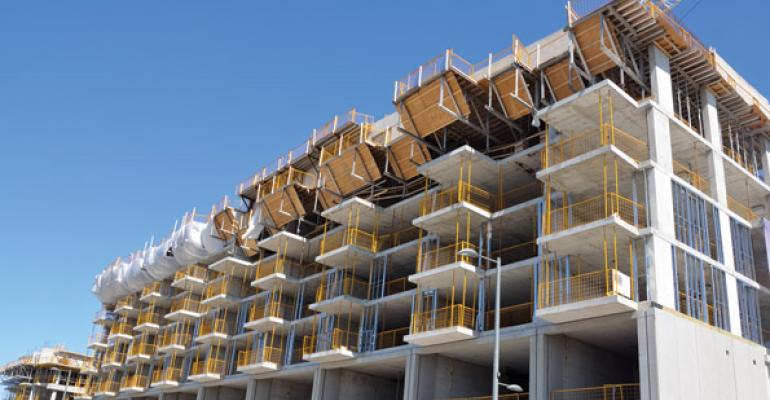(Bloomberg) -– A real estate developer wanted to increase affordable housing in Denver, trying to make fiscal sense out of a plan to build rental apartments for people making only 30 percent of the area's median income—the kind of housing America desperately needs. He discovered that, no matter what lever he moved or compromise he made, he was going to need some money from the government to make it work. Then he was going to need some more.
Almost one in four U.S. renters spends more on housing than they can afford, according to a report in June from Harvard University‘s Joint Center for Housing Studies—and the problem gets worse at the lower end of the income spectrum. About 10 million renter households earn 30 percent or less of the area median income, accounting for a quarter of the renter population. The U.S. would need to add more than 7 million cheap apartments to meet demand from such extremely low-income renters, according to a recent report from the National Low Income Housing Coalition.
“If we want to prioritize closing the gap for low-income households, we’re going to need more funding from public subsidy,” said Erika Poethig, director of urban policy initiatives at the Urban Institute, which published an online simulator Tuesday for the purpose of illustrating the challenges to building new affordable housing. Our Denver developer above is fictional, but he's an illustration of what that simulator churns out: No matter how you slice it, creating the affordable housing needed today probably requires government help.
With the interactive tool, users can play developer, toggling their costs and expected revenues in an attempt to make a project "pencil out," a real estate euphemism for profitable, adjusting everything from rent levels and vacancy rates to debt service coverage, administrative expenses, and construction costs. The data underlying the project comes from a handful of recent affordable housing developments in Denver, a fast-growing city in the middle of an apartment-building boom that has increased costs for developers of market-rate and rent-regulated buildings alike.
Building for such poor renters is never an easy task, and in the case of our Denver developer, the job was complicated by the his desire to build near a light rail stop to carry his residents into the center city. That meant choosing a small site and limiting the number of units to 50, making it hard to count on winning federal tax credits to help fund the deal. He could raise rents so the average tenant is spending half their income on rent, but that would defeat the central purpose of the project. He could try to slash outlays for concrete and steel—but there’s only so far you can pare costs without running afoul of building codes or endangering tenants. Instead, he was forced to hunt for a development site farther from the city center, but also further away from people who needed the housing, not to mention their jobs.
Playing with the simulator, you quickly learn that there are only a few levers that truly affect a developer’s ability to finance a project. Taking a smaller fee or negotiating a more favorable loan can help at the margins; so can making the project so appealing to residents that no one ever moves out. To really reduce costs or raise revenue, though, there are just these options: Spend less on land, materials, and labor, or bring in more money by raising rents or finding new public financing. But land, materials, and labor can only be cut so much (construction costs are effectively fixed by labor and commodities markets), and raising rents removes the "affordable" from affordable housing.
That leaves subsidies, the biggest of which is the low-income housing tax credit, which Congress funded to the tune of $7 billion last year. Even so, that program is more useful to developers building for higher wage-earners, said Linda McMahon, chief executive of The Real Estate Council, a trade group for Dallas-area real estate companies. "Below 50 percent of area median income, you're talking about people who can only afford $500 or so in rent, and you really need another layer of subsidy to pay your [commercial] mortgage," she said.
Developers seeking to build for poorer renters sometimes start with low-income housing tax credits, then apply for additional funding from state or local governments. Poethig also pointed to a new law that would let developers tap rental vouchers to fund new projects, as well as mechanisms by which local governments give builders publicly-owned land or development rights in exchange for a promise to build affordable units.
There's also another way to create housing for the poorest renters, which is to build housing for higher wage-earners, freeing up older, lesser-quality units through a process called filtering.
"It's not always politically attractive, because you're talking about housing that has deteriorated a bit," said Reihan Salam, policy fellow at the National Review Institute. "That's basically how housing markets have always worked."
To contact the author of this story: Patrick Clark in New York at [email protected] To contact the editor responsible for this story: David Rovella at [email protected]
© 2016 Bloomberg L.P

